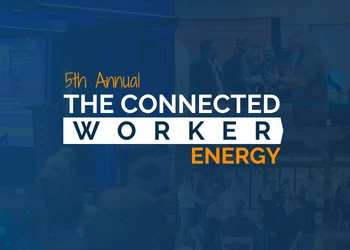3 Trends to Watch in Oil and Gas in 2023
Add bookmark
The oil and gas industry has long been a cyclical industry driven by the global price of hydrocarbons. But even by industry standards, the volatility of the past few years has been unprecedented. The cycle times between highs and lows have compressed and the transition to lower carbon energy and fuels adds an additional layer of complication for oil and gas companies.
In the year ahead, oil and gas companies must walk a careful line between investing in current and future production and refining capacity, while positioning their companies and operations for the net zero future.
Meanwhile, energy security and affordability has shot to the top of the political and economic agenda as the Russian invasion of the Ukraine – and the resulting Russian gas embargo – has added to an already volatile operating environment.
In the short term many countries turned to dirtier sources of energy such as coal, but the war has put greater scrutiny on relying on fossil fuels from foreign regimes and may lead to a faster energy transition to more renewable and cleaner sources of energy.
So just what are the trends for oil and gas professionals to watch out for in 2023?
Trend 1: Operational Excellence Becomes Ever More Important in 2023
Despite record profits the oil and gas industry is cautious about investing in new production capacity and fossil fuel refining as the world transitions away from hydrocarbons. Yet soaring demand for energy and embargos against Russian gas means that oil and gas companies are under pressure to reduce energy prices.
This means that operational excellence – long a mainstay in oil and gas operations – will be ever more important in the year ahead. Oil and gas companies will need to do more with existing assets and operations and fewer people, as labor stays scarce and investment is cautious. Thoughtful optimization and automation of key processes, digital transformation, and continual improvement in operations will be key to delivering affordable, reliable sources of energy.
Operational excellence also has an important role to play in helping oil and gas companies meet their net zero commitments. Operationally excellent companies are, by definition, more efficient and, therefore, have lower carbon and methane emissions. Oil and Gas IQ predicts that operational excellence teams will be increasingly called upon to help deliver on sustainability initiatives as these teams have the expertise and experience in delivering end-to-end process improvements across the business to support strategic objectives.
READ: 5 Imperatives for Opex in Oil and Gas
Trend 2: Digital Twins & Artificial Intelligence Dominate the Technology Agenda; Connected Worker Addresses Digital Gap for the Frontline
Digital technology has been transforming oil and gas operations over the past decade. The automation and improvement of processes and workflows helps the industry reduce costs and operate more efficiently with fewer people.
Further, insights gathered from the growing volumes of data can help the industry identify ways to operate more safely and reliably, reduce costs, increase efficiency, and better manage risks.
One of the ways that oil and gas companies are harnessing digital insights is through the use of digital twins. These digital representations of physical assets allow oil and gas companies to model their assets, test operational changes and improve decision making around asset maintenance and operation.
Digital twins may have been around for quite a number of years, but what’s changed this year is that AI and machine learning are truly coming of age.
When ChatGPT, an open-sourced AI platform, exploded onto the scene in November it caused quite a commotion. We’ve all been used to technology tools that fail to live up to the hype – automated phone systems that can’t quite figure out what you’re saying, transcription or translation services that offer unintelligible results or other technology that overpromises and underdelivers.
But ChatGPT turns out to be pretty good at what it does. (So good, in fact, that the company behind the technology, OpenAI, warns users that "ChatGPT sometimes writes plausible-sounding but incorrect or nonsensical answers.”)
Chat GPT is an example of how advanced machine learning tools and artificial intelligence is getting. AI is actually starting to live up to promise. In oil and gas, the industry will continue to deepen and explore the use of artificial intelligence and machine learning to better understand the impact of operational changes and gain essential insight into processes.
But there is still a gap between the innovative new developments in technology and the day-to-day reality for frontline workers in oil and gas.
We get all excited about “using robots, drones, or virtual reality,” observes Ryan Tsamouris, Digital Architect at Chevron Phillips Chemical Company. “But, how do these shiny toys create value for the everyday worker? For me, innovation should focus on people and the tools they need to do their jobs. That’s where the real value is.”
To address this disconnect, Oil and Gas IQ predicts that oil and gas companies will continue to invest in Connected Worker strategies in 2023 to better link workers to basic digital tools that make them more effective at work.
READ: How BP and Chevron Use Digital Twins to Optimize Assets
Trend 3: Reducing Methane Emissions Takes on New Urgency
Last summer US President Joe Biden passed the Inflation Reduction Act (IRA), dubbed the largest climate bill in US history. The Act offers billions of dollars and incentives to help support the development of clean energy pathways and proposes a methane fee for large emitters.
It was the latest in a series of measures to get large methane emitters to look at ways to achieve large cuts to methane emissions. The gas is more potent than carbon dioxide (the UN estimates that it is 80 times more potent) but the effects are shorter-lived, meaning that efforts to curb the gas will have a faster impact on the atmosphere.
At our recent Methane Measurement and Mitigation Summit Rebecca A. Steinmann, Global Director Emissions Control at industrial manufacturer John Crane, said that it’s critical for companies to first define their overall goals for methane reduction first and then identify their main methane emissions sources.
“The whole point is to reduce your emissions, not just to know what they are,” she explains.
Don’t get lost in concerns about whether the math is perfect, she adds, “before taking action and assigning meaningful corrective actions to mitigation and abatement.”
Outside the industry, pressure is mounting on oil and gas companies to do more about emissions overall. HSBC bank, for instance, announced in December that it would not provide funding to new oil and gas fields approved after 2021. It would also require more information about emissions targets from its energy clients.
Oil and gas companies that are acting on emissions will find easier access to capital, appeal to younger, more environmentally-conscious workers, and position themselves for the lower-carbon future.
Interested in learning more about this topic?
If you’re tasked with reducing methane emissions in your operations, join over 200 of your industry peers at one of our upcoming Methane Mitigation summits: Amsterdam (March 2023), Houston (June 2023), and Calgary (September 2023).























